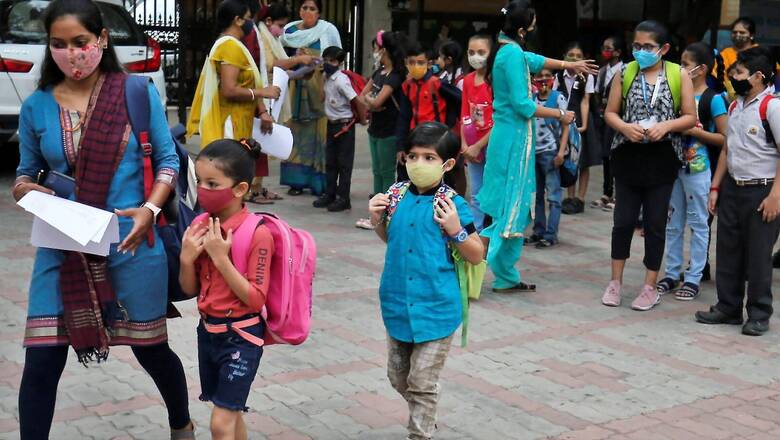
views
The way Omicron is infecting children in South Africa may not be the way it infects children in other countries, including India, microbiologist Dr Saumitra Das has told News18.com.
Covid-19 has not heavily impacted children in the previous waves across the world. But now South Africa has expressed concerns over the rising number of infections among children aged below five.
South Africa’s National Institute of Communicable Diseases last week announced that it was seeing “quite a sharp increase across all age groups, but particularly in the under-fives”.
However, according to Dr Saumitra Das, director of the National Institute of Biomedical Genomics (NIBMG), it is too early to conclude that Omicron will impact children in India the same way. West Bengal-based NIBMG is one of the 28 laboratories in India’s consortium on Sars-CoV-2 genome sequencing (INSACOG).
“We need to understand that the immune system of individuals, their eating habits, the strength of the body in terms of previous exposure to infections apart from host genomics, plays an important role in determining the working of any virus,” Das told News18.com in an exclusive interaction.
“Indian exposures to infectious diseases are different from that in foreign countries,” Das said, adding that “it would be speculative to predict if Omicron would impact Indians the way it’s impacting in South Africa or in other countries.”
However, he further clarified that “the definitive answers would only be clear in the coming weeks”. Das, who is a microbiologist at the country’s premium Indian Institute of Science, emphasised that the idea is to be on “alert” and not get affected by the “unnecessary panic”.
“If people are following Covid-appropriate behaviour and have taken two doses of vaccines, there is no need to cause panic but the need is to be on alert. “
‘Mere Speculation’
All countries across the world are trying to read the behaviour of Omicron and till then, we need to trust science, the professor said.
In India, he said, several centres are trying to isolate the virus and “we will soon start the process to understand the characteristics of Omicron as soon as the isolation process is completed”.
The process of isolation helps extract the virus and then transfer it to other cells to learn about its growth trajectory. “It is the process by which one can answer the questions over transmission and virulence. Otherwise, everything stated before experimental validation is just mere speculation.”
Omicron Surveillance Increased, Report Generation Quicker
Das, who is a member of INSACOG, said India has already increased surveillance over Omicron by increasing the genomic sequencing of random samples across India. “Our idea is not just to look for Omicron but to look for all possible mutant strains. The stringent set of rules released for airport sampling is also contributing hugely towards the surveillance.”
Report generation time has also gone down, he said, considering that “we don’t want the travellers to unnecessarily wait for reports while they are in quarantine”.
There are different sequencing platforms across 28 sequencing centres in India and over 300 sentinel sites, he explained, while adding that some platforms can process 10 samples in one go whereas other platforms can process around 750 samples in one go.
“Earlier, for surveillance purpose, the samples were accumulated and tested as per the threshold requirement of the platforms. But now, we won’t wait to reach any particular threshold and process the suspected samples with priority.”
While this process reduces the waiting time, report generation takes around 72 hours. “This includes the time taken for sample processing, RNA isolation then sequencing and analysis.”
“Once the report is generated by the machine, it is analysed by the experts and the sequence generated is interpreted by matching the sequence of the variant in question,” he said.
Read all the Latest India News here




















Comments
0 comment